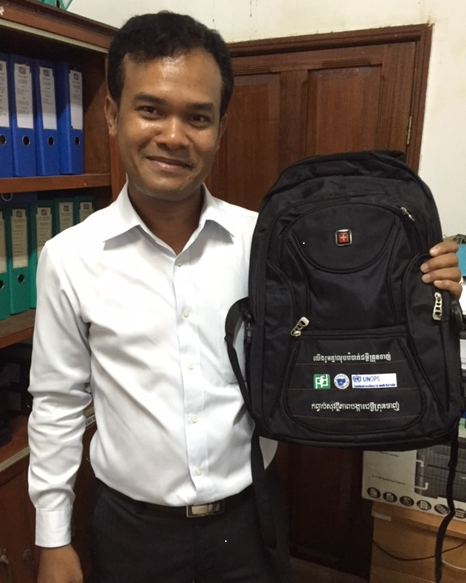Dangers on the Border: PFD’s work to prevent the next global health crisis
Multi-drug resistant (MDR) malaria along the Cambodia-Thailand border continues to be a public health challenge. With the recent Ebola outbreak bringing to light the dangers of Partners for Development (PFD) with support from The Global Fund to Fight AIDS, Tuberculosis and Malaria (The Global Fund) is working to eliminate malaria in Cambodia, with special focus on containing drug resistant malaria. Cambodia has seen a significant decrease in malaria cases and deaths over the past decade which has been linked with the efforts of The Global Fund, in part due to PFD’s work in the villages most exposed to Malaria.our increasingly mobile global population combined with infectious diseases, many are fearful of what will happen if the new resistant strain of malaria reaches the rest of South East Asia and Africa. If MDR malaria reaches Africa, experts warn it will cause a severe health crisis. With an estimated 2.13 million people at risk for malaria in Cambodia, and the emergence of multi-drug resistance malaria, continuing the fight against malaria in Cambodia is a primary public health concern.
PFD uses a community based strategy: building the capacity of community level partners empowering those partners to sustainably undertake malaria prevention programs in the communities. Currently, PFD builds local capacity by training local Mobile Malaria Workers (MMW) to assess the needs of their communities and manage the distribution of malaria prevention backpacks. These subsidized backpacks, as shown in the photos, which are distributed through a voucher system include: insect repellent, flash light, a long lasting insecticide hammock (LLIH) or net (LLIN), and prevention and care information.

PFD is working with the highest risk population, the mobile and migrant populations (MMP) and those who work in the forests in Kratie province, helping to track and prevent malaria. Targeting the MMP population is critical to stopping the spread of malaria, as population movements from non-malaria endemic areas to malaria endemic areas in Cambodia are one of the main factors in the recent emergence and spread of antimalarial resistant parasites.
This program is one of many in PFD’s fight against malaria in Cambodia. PFD has spread awareness by training of health workers, teachers, volunteers and Community Councils in malaria prevention and reached thousands through radio broadcasts with malaria and health related messages. In 2014 alone, PFD trained 117 new primary school teachers, 10,150 children as peer educators in malaria health edu¬cation, and 43 new and existing Village Health Volunteers. Historically, PFD has trained over 1,300 teachers, benefitting 30,000 primary school students in health educa¬tion. PFD has also built local capacity of communities by providing funds to eleven Community Councils in Kratie and Koh Kong provinces so that local communities can design and implement malaria prevention activities tailored to the specific needs of their communities.
The global fight against Malaria has achieved some success over the past few years with incidence rates and mortality rates decreasing, resulting in an estimated 625 million fewer cases and 4.3 million fewer malaria deaths from 2001 to 2013 (WHO, 2014). Even with the substantial gains made against malaria, World Health Organization estimates remain high at 198 million malaria cases and 584,000 malaria deaths globally in 2013.
Follow the links to find out more about PFD’s work fighting malaria and programing in Cambodia.
Footnotes:
1. According to the Center for Disease Control and Prevention: Antibiotics and similar drugs, together called antimicrobial agents, have been used for the last 70 years to treat patients who have infectious diseases. Since the 1940s, these drugs have greatly reduced illness and death from infectious diseases. Antibiotic use has been beneficial and, when prescribed and taken correctly, their value in patient care is enormous. However, these drugs have been used so widely and for so long that the infectious organisms the antibiotics are designed to kill have adapted to them, making the drugs less effective. Many fungi, viruses, and parasites have done the same. Some microorganisms may develop resistance to a single antimicrobial agent (or related class of agent), while others develop resistance to several antimicrobial agents or classes. These organisms are often referred to as multidrug-resistant or MDR strains. In some cases, the microorganisms have become so resistant that no available antibiotics are effective against them.
